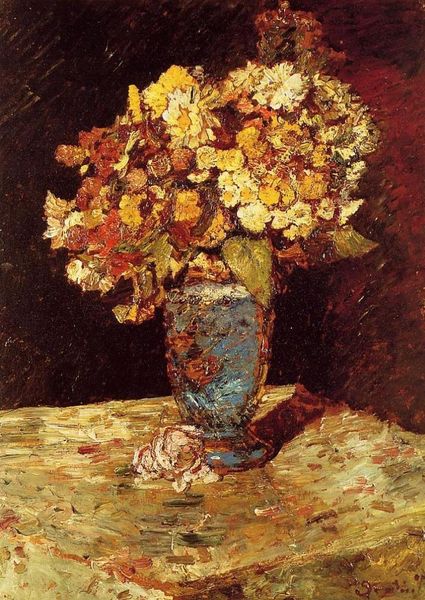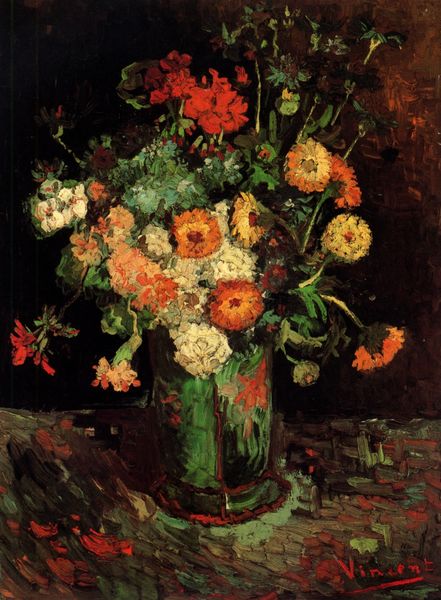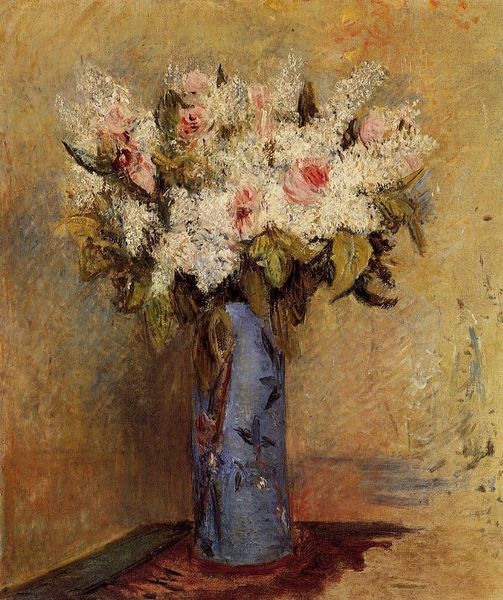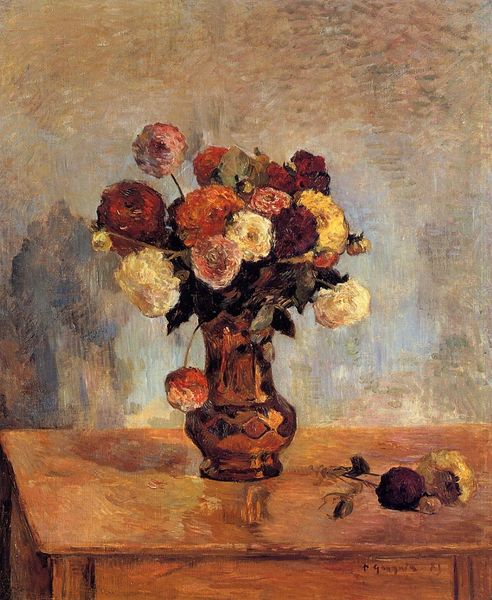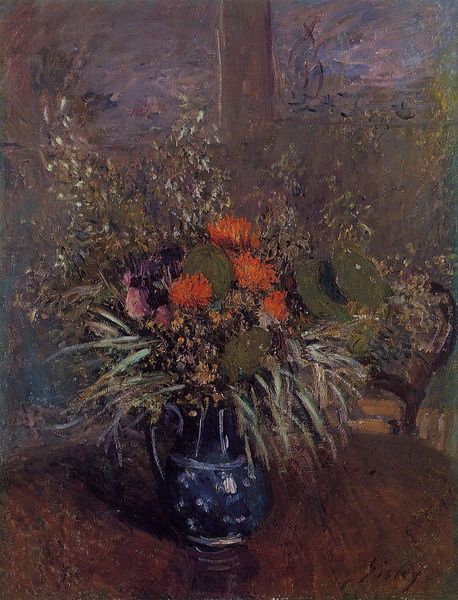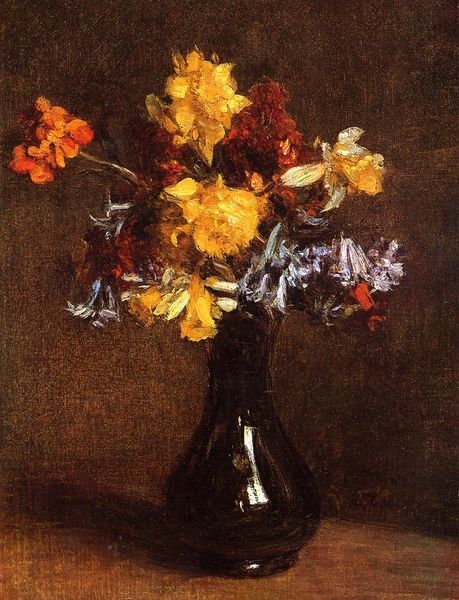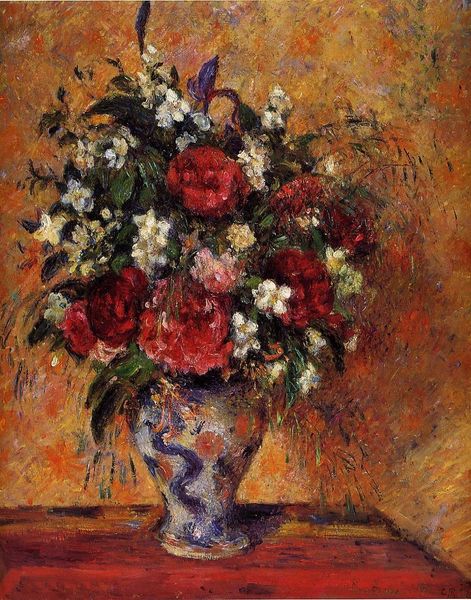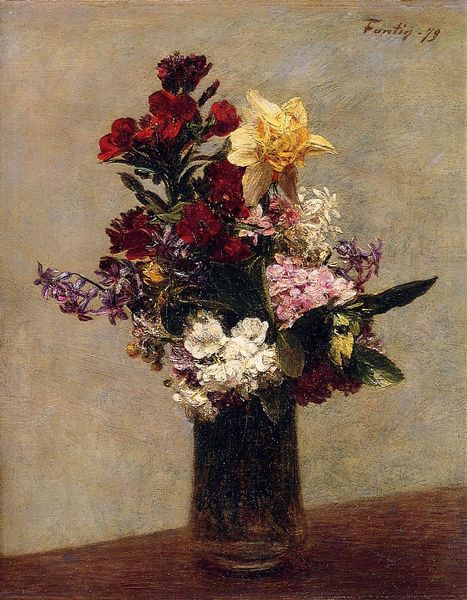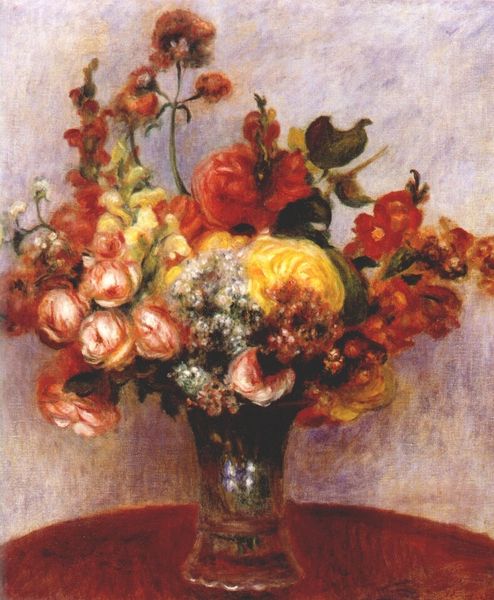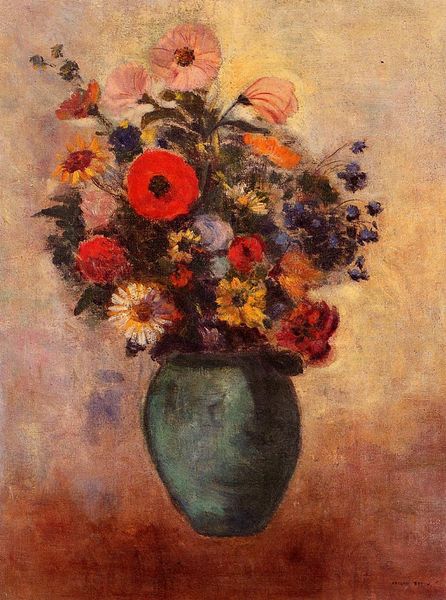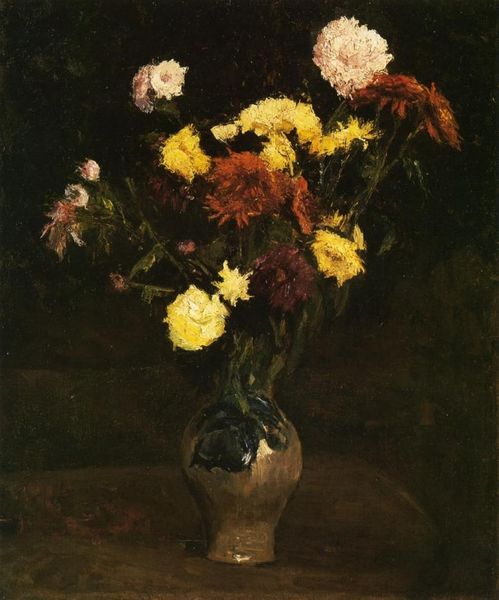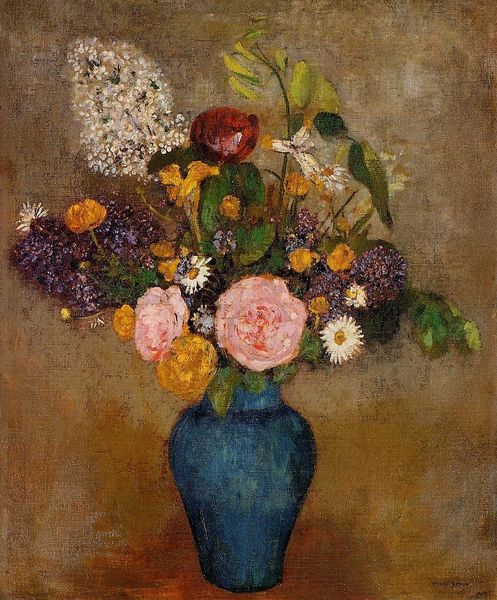
painting, oil-paint, impasto
#
baroque
#
painting
#
oil-paint
#
oil painting
#
impasto
#
romanticism
Copyright: Public domain
Editor: This is Adolphe Monticelli's *Bouquet of Flowers,* an oil painting that lives in a private collection. The thick impasto creates such a dynamic, almost agitated surface! How do you interpret this work, especially considering the era in which Monticelli was painting? Curator: Well, looking at this through a historical lens, we have to consider the rapidly changing art world of the 19th century. Monticelli's almost frenzied application of paint can be seen as a rejection of the highly polished, academic style that was so prized by institutions at the time. Do you see how the darkness of the background sort of pushes the flowers forward? Editor: Yes, it creates a stage for the flowers. It makes the work almost theatrical. Curator: Exactly! Think about the rising popularity of Realism and Impressionism. Monticelli was working in a period where artists were increasingly interested in capturing subjective experiences. His choice to depict flowers in this way could be read as an assertion of the artist’s individual vision. It is so emotional, even turbulent. Editor: So, you're suggesting it's not just a pretty bouquet, but a statement against the establishment? Curator: It’s both! And thinking about the display of art at the time, these flower paintings found their audience in private salons and among collectors seeking something different. It catered to the wealthy class, yes, but his style moved against what had been formally supported in large state sponsored exhibitions. Editor: That makes a lot of sense. I hadn't thought about the market aspect so explicitly. It reframes how I see not just the art, but the artist too. Curator: Precisely. Considering that shifts our appreciation.
Comments
No comments
Be the first to comment and join the conversation on the ultimate creative platform.
